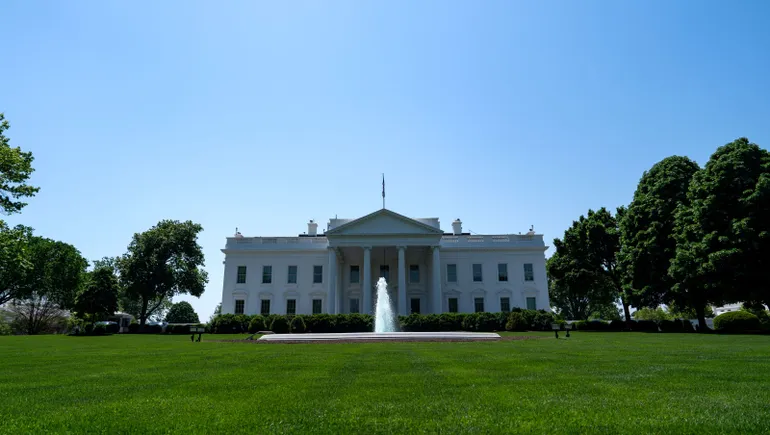Fashion
5 ways the election will impact fashion

At New York Fashion Week in September, designers encouraged consumers to vote and leaned heavily into the all-American trend that’s helping to redefine what domestic fashion is and could be.
Tuesday’s election will determine how all of that energy gets translated into policy and what shape that policy will take over the next four years.
As the balance of power shifts in Congress and the White House, the fashion industry may be facing some significant changes, both at home and abroad. Here are some of the main topics on the table for the next administration.
Imports and tariffs
Nearly 98% of apparel consumed in the U.S. is imported, according to the United States Fashion Industry Association. That means the next administration’s approach to import tariffs will affect the fashion industry’s bottom line.
Similarly, the next administration’s stance on the de minimis exception will impact some of fashion’s biggest players, including fast fashion giants Shein and Temu. Investigations have found that Shein and Temu avoid certain import tariffs because of their low-priced products. The Biden-Harris administration announced in September it wanted to limit products shipped under de minimis, a provision of the Tariff Act of 1930 that mostly exempts packages worth less than $800 from being reviewed. It’s not clear how those limits could be impacted moving forward.
Some supply chain experts have said that Temu and Shein may be able to weather changes from the policy, but smaller companies may not.
Tim Manning, a former White House supply chain official, recently said the regulatory process to overhaul de minimis could commence before President Joe Biden leaves office. The next administration’s stance on de minimis hasn’t yet been solidified.
Other pending and passed legislation targets the use of forced labor in products shipped to the United States. Several fashion companies, including Shein, Temu, Nike and Adidas, became subjects of a congressional investigation which asked them to confirm their products are compliant with the Uyghur Forced Labor Prevention Act, or UFLPA. U.S. lawmakers have since proposed more bills to further prevent items made with forced labor from entering the U.S.
In one instance, avoiding cotton from the Xinjiang region of China, where the country has been accused of detaining more than 1 million Uyghur people, led to repercussions from China. PVH Corp., parent company of Calvin Klein and Tommy Hilfiger, was put under investigation by China for the alleged boycotting of cotton from the region.
President Elect Donald Trump has proposed a 60% tariff on goods from China, between a 25% and 100% tariff on goods from Mexico, as well as a 10% to 20% across-the-board tariff.
Domestic manufacturing
While the Inflation Reduction Act and the Investment in Jobs Act already exist and have provided funds for domestic manufacturing, some in fashion have said these efforts bypassed the textile sector. There is a chance to remedy this however, with government subsidies allocated to building factories in the U.S.
Trump has criticized both pieces of legislation however, and could roll back the IRA. He has said that increased tariffs on imports would encourage domestic production.
Sustainability and ESG
This year, the fashion industry has faced increasing international scrutiny over its environmental impact and labor practices. The next administration’s stance on climate change and social responsibility will impact how consumers and corporations navigate the shifting landscape of ESG regulations.
For example, the Securities and Exchange Commission’s climate-risk disclosure rules could begin to impact corporate reporting in 2025. These regulations would require any company that files documents with the SEC to describe and track risks associated with, among other things, Scope 1 and Scope 2 greenhouse gas emissions.
The SEC could also issue regulations regarding human capital management, subject to the Congressional Review Act, and impacted by the balance of power in Congress.
Meanwhile, the Federal Trade Commission’s Green Guides, which are meant to give companies guidance when making environmental claims, could be updated in 2025. Although they’re not legally binding, the guidelines set precedents for the FTC to follow when deciding what constitutes deceptive advertising.
While the election may not directly impact SEC or FTC regulations, it may affect who chairs each commission, which could change regulatory timelines and content.
Labor laws may also face scrutiny, and the success of domestic proposals such as the FABRIC Act may hinge on the balance of power in the Senate.
In addition, the next administration will get to decide whether the U.S. continues to sign on to the Paris Climate Accords, which govern how participating countries mitigate climate change.
Mergers and acquisitions
As the fashion industry eyes consolidation, the next administration’s picks for antitrust officials will be critical.
The question of antitrust enforcement has been top of mind since April’s move by the Federal Trade Commission to block the combination of Tapestry and Capri Holdings.
Last month, a federal judge agreed with the FTC, which previously held that a combination of Tapestry’s Coach, Kate Spade and Stuart Weitzman brands with Capri’s Michael Kors, Versace and Jimmy Choo would give Tapestry a dominant share of the accessible luxury handbag market.
Both Tapestry and Capri said they would appeal the decision.
But a report from law firm McDermott Will & Emery states that a new administration would create a more favorable environment for antitrust in mergers and acquisitions, “going back to more traditional, pragmatic approaches with consent orders allowing for divestitures to solve problematic portions of transactions.”
The report added that some industries could face more scrutiny than others.
“Trump would eye tech companies and companies in industries perceived to have offshored employment,” the report stated.
Consumer spending
Although common wisdom holds that elections can be disruptive to consumer spending, a May 2023 study published in the Review of Economics and Statistics found “no evidence of a change in spending driven by changes in economic expectations due to partisan bias.”
Additionally, in October, Yale University economist Ernie Tedeschi told market research firm Nielsen that election years don’t have an impact on U.S. consumer spending. He said that to the contrary, spending tends to increase in the year leading up to the election, and then continues to grow in the following year.
That’s not to say there won’t be polls discussing consumer optimism, or warning that some companies in the luxury sector will continue to struggle.
However, if fashion spending changes during the next four years, it probably won’t be due to the 2024 elections.









